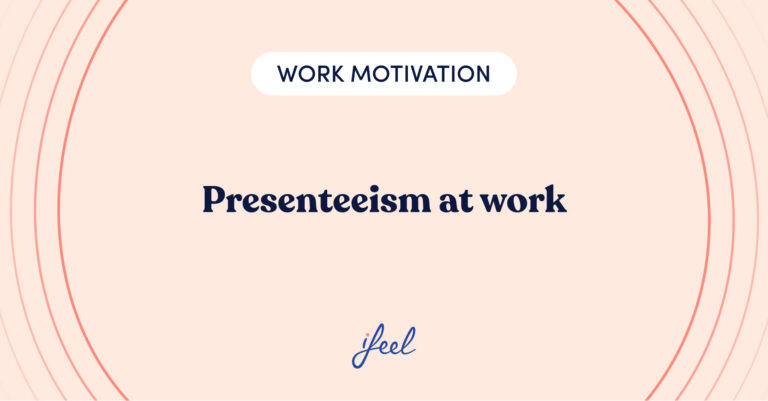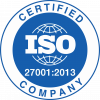Every successful project is the result of applying a project management methodology, which enables the successful execution of the project. For this reason, having a good working approach is the key to your success.
However, how do you know which project management methodology to use? In today’s world of work, multiple work processes have been developed to adapt to different companies and different projects. But, within these options, how to choose the right one?
In this article, we will explore project management methodology, how to apply different ones to a specific project, and what they consist of so that you can make the best decisions when selecting a strategy to work, fostering your professional development.
What is project management methodology?
A project management methodology is a system of techniques, rules, principles, and procedures for developing a project. Basically, a good methodology is responsible for elaborating, defining, and systematising the set of strategies for producing a company’s products or services.
It is common that before starting any project, we think almost automatically about the steps to be followed to achieve the objectives. For this reason, having a structured plan or a defined protection management methodology beforehand will facilitate executing the activities that will lead you to achieve your goals.

Benefits of choosing a project management methodology

Using a project management methodology adapted to your product or service and the objectives you want to achieve. You can apply a series of objective criteria to help you decide. In other words, by choosing a working methodology, you have a series of steps to implement in advance, reducing the risks and pressure inherent to any decision-making process.
In addition, if the whole team follows the same project management methodology, the same principles and language guide all members. This facilitates the exchange of information, improving interactions and communication.
Moreover, having a working methodology allows you to standardise the activities to be carried out in each phase of the project, simplifying the management processes. This simplification allows the processes to be controllable, efficient, and productive. A project management methodology can significantly improve business operations, enhancing efficiency and reducing costs. According to research, 54% of workers believe automating mundane tasks could save them at least five hours per week, emphasising the potential for increased productivity through better project management practices
In conclusion, using work methodologies provides tools that improve team performance and motivate team members, making them feel that the project’s success is in their hands.
The most popular project management methodologies
1. Waterfall
The waterfall method is a project management methodology that follows the traditional approach. In this approach, the project objective is established first, and then planning begins based on it. This technique divides the objective into different activities that must be executed sequentially until the final project is completed.
The technique’s name comes from the fact that all actions follow a linear process in a staggered manner (similar to a waterfall) and in sequential order. This means that a dependency links all tasks: we cannot start a new task until we have completed the previous one. This ensures that the project remains active and allows the project manager to control the details of each phase.
The phases or sequences most commonly found in this methodology include:
- Initiation: project definition and approval.
- Planning: development of the different management plans.
- Execution: carrying out the planned tasks.
- Monitoring and control: the executed tasks are supervised and compared with the planning. Necessary corrections are applied.
- Close: A phase or project is “closed” when the delivery of the executed tasks is fulfilled, when it is impossible to execute part or all of the planned tasks, or when the project is no longer feasible or achievable.
Among all the project management methodologies, this one is recommended for managing large projects that involve many people, as the clarity of the steps and their interdependence allows one to follow up on the work necessary to achieve the goals set.
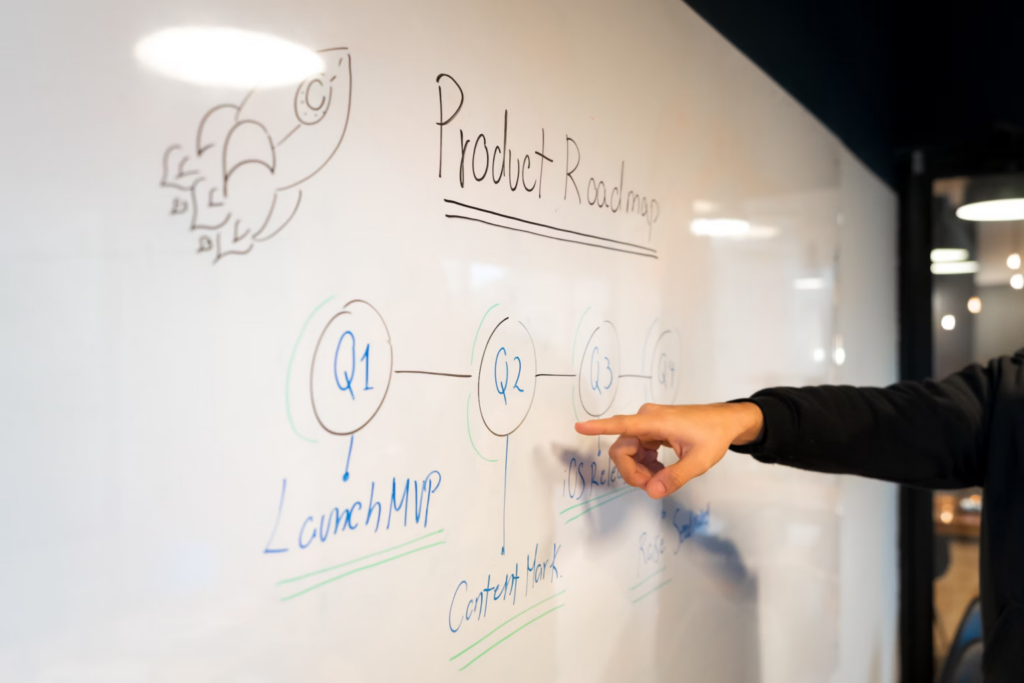
2. Agile methodology
Agile methodology is a common project management methodology and is characterised by being collaborative, fast, effective, data-driven, and valuing people over processes.
It prioritises flexibility and continuous improvement over rigid processes. It aims to establish a more collaborative and flexible method, which allows the products or services to be modified throughout the project.
To do this, it divides the project into phases or sprints, which consist of smaller, progressive tasks that are continuously reviewed and modified based on the feedback and demands of the end users. This method’s advantage is that it allows the project objectives to be adjusted as new sprints are defined, thus ensuring that the final product will meet the client’s needs.
The Agile working methodology can be adapted to any working team and combined with other more specific project management approaches, such as the following.
3. Scrum
Of all the project management methodologies, Scrum is based on interactions or sprints used to establish a project “cycle”. These short periods aim to focus efforts on specific short-term goals to control their fulfillment.
To do this, the Scrum methodology relies on a project manager to lead daily meetings, demonstrations, and retrospective sprint analyses. These meetings are held to involve all project participants to ensure that tasks are completed on time.
Scrum is a project management methodology often associated with Agile methodology, as they have similar principles, such as valuing people and team collaboration over processes. In addition, the Scrum method is often used to work on complex projects that may have a high volume of last-minute changes.
4. Kanban
Among the different work methodologies, Kanban aims to increase efficiency by focusing work on the most important project tasks. To do this, it relies on visual elements such as boards (physical or digital) or sticky notes, which allows teams to better visualise the workflow and project progress to manage resources for continuous improvement.
In this way, Kanban differs from other work methodologies by seeking to generate value for the client, without adding additional costs, by focusing on and prioritising the most relevant tasks of the project. For this reason, Kanban boards are ideal for all types of teams, especially for those with many activities to perform within short periods. They are also helpful for teams working remotely, as they help team members to easily visualise work and keep up to date no matter where they are working from.
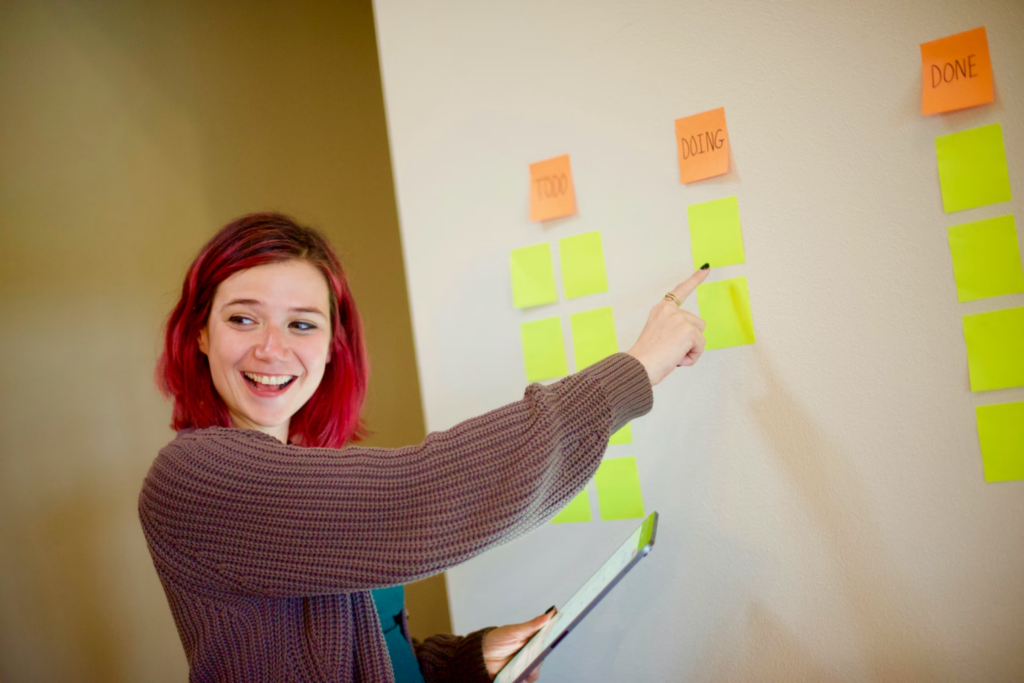
5. Scrumban
As its name suggests, this method merges two work methodologies, Scrum and Kanban, combining the best of both methods.
Scrumban, a variation of the Scrum method, manages work in short cycles or sprints but also allows the use of visual elements or boards, a variation of the Kanban methodology. In this way, a simple and clear work structure is maintained, allowing team members to organise and prioritise tasks according to which are the most important.
Additionally, Scrumban keeps the meetings coming from Scrum, intending to keep all team members aligned on the objectives and foster collaboration.
6. Critical Path (CPM)
The critical path method, or CPM, is a technique that is applied to estimate the total duration of a project, with the objective of identifying, organising, and planning the tasks within the project.
Therefore, within all work methodologies, the critical path aims to help teams reduce project schedules by identifying the most relevant tasks and scheduling other tasks that can be carried out in parallel (“dependencies”). This aids project planning, allowing you to compare estimated schedules with actual schedules to more accurately estimate how long each task will take in future projects.
To carry out a critical path, the following steps must be followed:
- All project tasks are identified.
- Identify the dependencies between tasks.
- Assign tasks and dependencies to establish a network diagram, showing how the tasks relate.
- Estimate how long each task will take
- Add the durations together to estimate the duration of the entire project.
- Identify the critical path to be followed to complete the project.
- Evaluate and update the critical path periodically to compare estimated times with actual times.
Critical path stands out for its objective of correctly managing the timing of each task, tracking project objectives and progress, prioritising deliverables to better manage task deadlines. The critical path method is ideal for small and medium-sized projects and teams.
7. Critical Chain Management (CCPM)
This work methodology is directly related to the previous method, but in this case, it provides a greater level of detail in the definition of tasks to correctly allocate resources and to evaluate and reduce risks.
This is how critical chain project management aims to estimate the time the tasks will take and the resources needed to complete a project. In other words, this method also divides activities into smaller tasks and describes their dependencies and durations, but in this case, it seeks to create a realistic schedule and budget for the completion of projects rather than just better managing the order of tasks.
This methodology, in addition to implementing a task breakdown structure that allows for effective management of large workloads, also helps to increase productivity and efficiency by eliminating the need for time-consuming and resource-intensive project revisions.

8. PRINCE2
The PRINCE2 project management methodology, also called “projects in controlled environments”, is a strategy that seeks to define and perform work based on precise requirements, emphasising planning and documenting work items.
Although this methodology was originally designed for IT projects, it can now be used for multiple projects to help reduce costs and time overruns. Its main objective is to define roles and support management to streamline many individual project management tasks, such as controlling a phase, managing the delivery of a product, and initiating and closing a project.
This management method is ideal for working on large projects involving many participants.
9. Six Sigma
Unlike the project management methodologies already explained, Six Sigma aims to improve project quality. To do this, it uses statistical techniques to measure and eliminate defects or errors in the project results, thereby increasing quality. This is achieved through continuous improvements by experts in the field to define, support, and control processes.
The primary goal of Six Sigma is thus the continuous improvement of processes and the elimination of all possibilities of defects using data-driven improvement cycles. For this, the following steps are carried out: finding defects, identifying and eliminating their causes, and optimising processes to increase reliability and accuracy in the future.
Depending on the type of project, the Six Sigma methodology may be one of two:
- DMAIC stands for define, measure, analyse, improve, and control. This methodology is applied to improve existing projects.
- DMADV stands for define, measure, analyse, design, and verify; it is used to create new processes or products.
Six Sigma is a project management methodology useful for large companies, mainly those wishing to implement data-driven methods to reduce defects and optimise business processes. Research shows it enhances communication and collaboration, improves quality and customer satisfaction, and reduces costs.
10. Lean methodology
The Lean method optimises processes to achieve goals more efficiently as a project management methodology. This means making better use of available resources, helping to identify and eliminate delays and other inefficiencies, and delivering value faster.
This strategy, therefore seeks to reduce “waste” in terms of work processes; these are known as the three “M’s”:
- Muda (waste): practices that consume resources, but do not add value.
- Mura (discrepancy): refers to overproduction that leaves waste.
- Muri (overload): which refers to the overloading of existing resources.
Therefore, by applying this method to manage projects, the aim is to avoid the “three M’s” and to carry out projects in the best possible way. Therefore, it is a useful methodology for teams facing efficiency problems. The Lean methodology works according to the following principles:
- Define the value: Identify each product or service (as seen by the customer).
- Define value flow: Plan the process and identify areas of waste (resources, time, or redundancy).
- Create flow: Create a flow plan that eliminates the identified waste.
- Employing a new system: allows you to move forward with the plan only as the customer presents new needs. This will prevent you from taking on too much work at once.
- Seek perfection: With the idea of continuous improvement, you want to eliminate as much waste as possible within your process.
11. Extreme Programming (XP)
Extreme programming is a project management methodology used to manage dynamic projects with tight deadlines. This methodology is more related to software development and aims to create high-quality systems. It is based on close customer interaction through constant testing and short development cycles, which results in faster processes and higher productivity.
The main objective of this work methodology is to carry out fast, continuous, and incremental delivery cycles to achieve the client’s expected results. Predefined practices and stages ensure maximum process effectiveness. The software (or other project) is developed weekly, with regular meetings between the client and the development team.
In this case, this working methodology is recommended for projects with tight deadlines but should be used cautiously to avoid burnout.

How to select the right project management methodology for your team
When it comes to project management methodology, there is no one right approach that works for all teams. Each method has different characteristics, capable of helping – or not – to manage a project from its initial conception to its conclusion.
For this reason, to select the best option among all the available project management methodologies, you should carry out an analysis that considers two fundamental aspects: the size of your team and your preferences in terms of working methods. In addition, you should take into account:
| Factor | Description |
| Your field | Reflect on your projects’ objectives —do you prioritise interpersonal relationships or efficiency? This will guide you towards adopting a project management methodology that is similar to your approach. |
| Project approach | Some methods are less effective than others when it comes to organising complex tasks. For this reason, it is useful to analyse the activities to be carried out in terms of complexity to select the methodology that best suits your tasks. |
| Complexity of projects | Algunos métodos resultan menos eficaces que otros cuando se trata de organizar tareas complejas. Por esta razón, conviene analizar las actividades a realizar en términos de complejidad, para seleccionar la metodología que mejor se adapte a las tareas que realizas. |
| Degree of role specialisation | Some methods are less effective than others when it comes to organising complex tasks. For this reason, it is useful to analyse the activities to be carried out in terms of complexity in order to select the methodology that best suits the tasks you perform. |
| Company size | Methods such as Kanban are ideal for teams of any size, while options such as critical path are better suited to smaller teams. |
Unlock your team’s potential
At ifeel, we know that work should not disrupt people’s well-being. To take things to the next level, consider implementing a management tool to improve the execution and monitoring of development projects.
To do this, our team of expert workplace well-being psychologists has created a mental well-being solution for companies, that enhances talent retention, reduces presenteeism, and tackles employee stress.
Thanks to our mental well-being solutions, your company’s HR managers can receive personalised, data-driven advice on improving their teams’ psychological well-being. This solution also offers employees a 360° mental health care service structured at different levels according to their needs. Try our solution now to see how it could help you.
We hope you found this article on project management methodology interesting. You can also check out one of our latest articles on the Pomodoro Technique, which emphasises the importance of dividing work into short time intervals and how this can benefit productivity and outcomes. If you want more information about ifeel’s mental well-being solutions for companies, simply request it, and we will contact your team as soon as possible.





